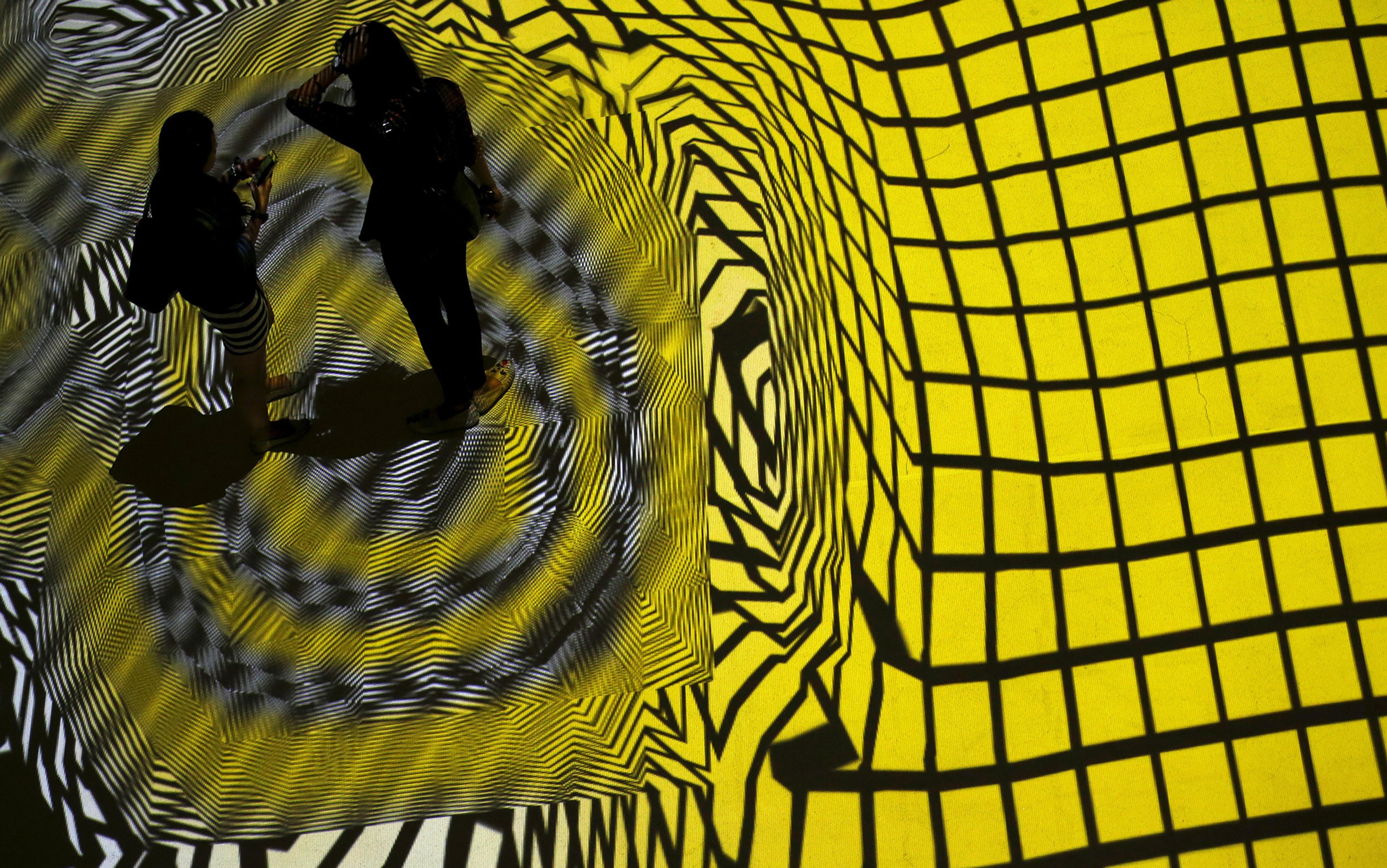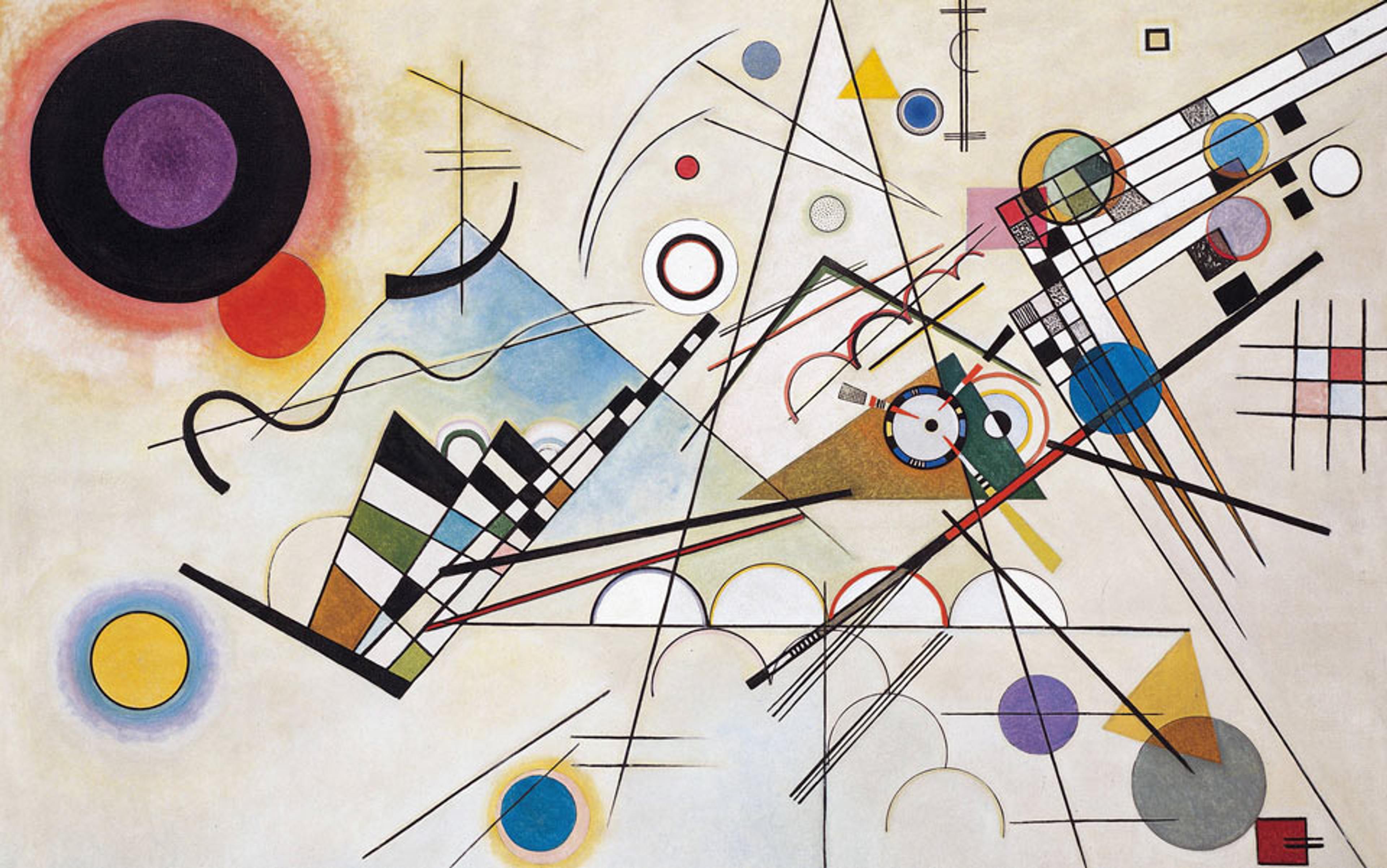In 1959, the English writer and physicist C P Snow delivered the esteemed Rede Lecture at the University of Cambridge. Regaled with champagne and Marmite sandwiches, the audience had no idea that they were about to be read the riot act. Snow diagnosed a rift of mutual ignorance in the intellectual world of the West. On the one hand were the ‘literary intellectuals’ (of the humanities) and on the other the (natural) ‘scientists’: the much-discussed ‘two cultures’. Snow substantiated his diagnosis with anecdotes of respected literary intellectuals who complained about the illiteracy of the scientists but who themselves had never heard of such a fundamental statement as the second law of thermodynamics. And he told of brilliant scientific minds who might know a lot about the second law but were barely up to the task of reading Charles Dickens, let alone an ‘esoteric, tangled and dubiously rewarding writer … like Rainer Maria Rilke.’
Sixty-plus years after Snow’s diatribe, the rift has hardly narrowed. Off the record, most natural scientists still consider the humanities to be a pseudo-science that lacks elementary epistemic standards. In a 2016 talk, the renowned theoretical physicist Carlo Rovelli lamented ‘the current anti-philosophical ideology’. And he quoted eminent colleagues such as the Nobel laureate Steven Weinberg, Stephen Hawking and Neil deGrasse Tyson, who agreed that ‘philosophy is dead’ and that only the natural sciences could explain how the world works, not ‘what you can deduce from your armchair’. Meanwhile, many humanities scholars see scientists as pedantic surveyors of nature, who may produce practical and useful results, but are blind to the truly deep insights about the workings of the (cultural) world. In his best-selling book The Fate of Rome (2017), Kyle Harper convincingly showed that a changing climate and diseases were major factors contributing to the final fall of the Roman Empire. The majority of Harper’s fellow historians had simply neglected such factors up to then; they had instead focused solely on the cultural, political and socioeconomic ones.
In my own book, The Oracle of Numbers: A Short Philosophy of Mathematics (2023), currently only available in the original German, I tried to counter this intellectual parochialism. During my academic training in mathematics, physics and philosophy, I witnessed many instances of this narrow-mindedness and always wondered why highly intelligent people in these fields guarded themselves against major insights from the other fields. I wanted to motivate them, and the inquisitive general public, to open their minds and see that the neverending quest for a better understanding of the world follows many paths.
Ludwig Wittgenstein once said: ‘I want to show the colourfulness of mathematics.’ In that spirit, I placed mathematics at the centre of my project because, in my view, mathematics searches along more of these many paths than any other intellectual discipline. It is connected on a deep level both with the natural sciences and the humanities. It bridges the gulf between them, and it does so by putting certain metaphysical and epistemological dogmas into question, as will become clear in the following.
The divide between the two cultures is not just an academic affair. It is, more importantly, about two opposing views on the fundamental connection between mind and nature. According to one view, nature is governed by an all-encompassing system of laws. This image underlies the explanatory paradigm of causal determination by elementary forces. As physics became the leading science in the 19th century, the causal paradigm was more and more seen as the universal form of explanation. Nothing real fell outside its purview. According to this view, every phenomenon can be explained by a more or less complex causal chain (or web), the links of which can, in turn, be traced back, in principle, to basic natural forces. Anything – including any aspect of the human mind – that eludes this explanatory paradigm is simply not part of the real world, just like the ‘omens’ of superstition or the ‘astral projections’ of astrology.
On the opposing view, the human mind – be it that of individuals or collectives – can very well be regarded separately from its physical foundations. Of course, it is conceded that the mind cannot work without the brain, so it is not entirely independent of natural forces and their dynamics. But events of cultural significance can be explained as effects of very different kinds of causes, namely psychological and social, that operate in a sphere quite separate from that of the natural forces.
These divergent understandings underpin the worldviews of each culture. Naive realists – primarily natural scientists – like to point out that nature existed long before humankind. Nature is ordered according to laws that operate regardless of whether or not humans are around to observe. So the natural order of the world must be predetermined independently of the human mind. Conversely, naive idealists – including social constructivists, mostly encountered in the humanities – insist that all order is conceptual order, which is based solely on individual or collective thought. As such, order is not only not independent of the human mind, it’s also ambiguous, just as the human mind is ambiguous in its diverse cultural manifestations.
Mathematics mediates a conciliatory view that avoids the mistake of the naive realist and the naive idealist
The clash of cultures between the humanities and the natural sciences is reignited over and over because of two images that portray the interrelationship of mind and nature very differently. To achieve peace between the two cultures, we need to overcome both views. We must recognise that the natural and the mental order of things go hand in hand. Neither can be fully understood without the other. And neither can be traced back to the other.
The naive realist and the naive idealist fall prey to the same error, albeit in opposite directions – which gets us some way to the essence of the disagreement between the two cultures. Both confuse determination with explanation. ‘Determination’ refers to the emergence of a real-world phenomenon through a more or less complex web of cause-and-effect relationships. For example, when particle physics tells us that the Northern Lights result from solar winds colliding with Earth’s atmosphere, we get an explanation of the luminous phenomenon by having its main causally determining factor pointed out to us. Similarly, when psychological research informs us about the potentially long-lasting effects of trauma, we can explain the behaviour of victims of childhood abuse, to a certain extent, as a result of how repressed memories influence their actions. Now, the realist and the idealist – the scientist and the literary intellectual – both agree that explaining a phenomenon always means, in essence, revealing such determining causal relationships. Their views differ only in that for the realist the causal network is rooted in a firm natural basis, whereas for the idealist the basis is conceptual and therefore dependent on a contingent cultural embedding.
The best mediator of a conciliatory view that avoids the mistake of the naive realist and the naive idealist is mathematics. Mathematics gives us shining proof that understanding some aspect of the world does not always come down to uncovering some intricate causal web, not even in principle. Determination is not explanation. And mathematics, rightly understood, demonstrates this in a manner that lets us clearly see the mutual dependency of mind and nature.
For mathematical explanations are structural, not causal. Mathematics lets us understand aspects of the world that are just as real as the Northern Lights or people’s behaviour, but are not effects of any causes. The distinction between causal and structural forms of explanation will become clearer in due course. For a start, take this example. Think of a dying father who wants to pass on his one possession, a herd of 17 goats, evenly to his three sons. He can’t do so. This is not the case because some hidden physical or psychological forces hinder any such action. The reason is simply that 17 is a prime number, so not divisible by three.
Those who remember mathematics only as a dull school subject that is mainly about applying unmotivated formulas in the context of uninspired exercises will naturally be sceptical about my claim that mathematics can bridge the gulf between the two cultures. The usual presentation of mathematics to the broader public makes it appear, at best, as a useful auxiliary discipline for the natural and technological sciences, or, at worst, as a curious collection of cute logical tricks. How could such a discipline possibly contribute to a better understanding of the interrelationship between mind and nature?
A first idea is given by Riemannian geometry, the foundations of which were laid in the mid-19th century by Bernhard Riemann, building on the work of his teacher Carl Friedrich Gauss. Gauss was fascinated by the intrinsic curvature at any point on the interior of a smooth surface. What does this mean? Take a flat sheet of paper. It has zero curvature everywhere, and this remains so even after it is rolled up into a play telescope; the apparent curvature is merely extrinsic, it exists only relative to the surrounding three-dimensional space. In contrast, the surface of a sphere has a non-zero intrinsic curvature everywhere. The surface doesn’t just look crooked, it really is crooked – in and of itself, so to speak.
Riemann elevated Gauss’s concept of intrinsic curvature to more than two dimensions. Ever since, one can meaningfully and precisely ask whether the ‘space around us is curved in itself’. Before Riemann, this would have been a meaningless sequence of words, at best with some associative force in the hands of a gifted poet. Riemann’s geometry made conceivable what was not only unimaginable before, but unthinkable in the truest sense of the word.
The example of Riemannian geometry not only demonstrates the ability of mathematics to broaden our intellectual horizons with new perspectives. It also shows how this intellectual-aesthetic advantage can yield unexpected scientific, and even practical, benefits: it provided the conceptual resources Albert Einstein needed to develop his general theory of relativity. Thus, Einstein was able to see gravity not as a force causing material objects to attract each other, but as a purely geometrical, ie, structural, element of the Universe. The Universe is curved in itself. And, since the Big Bang, it has been expanding, but not into a pre-existing surrounding space. The Big Bang was no explosion that ejected matter outwards (causal); there was and is simply no ‘outside’. Rather, the Universe is expanding in the sense of a certain continuous change of its intrinsic curvature (structural). It is thanks to Einstein, and Edwin Hubble, that we know this and can use it for useful things like the GPS. But it is only thanks to Riemann that we can think it at all.
Mind and world are no separate spheres that must first be connected. Rather, both depend on each other
The difference between causal and structural explanations becomes clearer with regard to Immanuel Kant’s conception of ‘transcendental idealism’, as laid out in his Critique of Pure Reason (1781). For Kant, empirical experience is possible only within a given conceptual framework, which in turn does not arise from empirical experience, but rather constitutes the human mind. And a crucial part of this framework is Euclidean geometry. The world is not ‘in itself’ populated by spatially and temporally delimited objects that interact with each other in a variety of ways. According to Kant, the world is structured this way because the human mind is able to grasp it in this way, and in this way only. Euclidean geometry, so he believed (he couldn’t know anything about Riemannian geometry yet), determines the spatial dimensions of this order. Thus, geometry is just as much a study of an elementary trait of our mind as of the space around us.
Kant’s transcendental idealism doesn’t only suffer from the fact that Euclidean geometry turned out to be not quite as constitutive as he thought. More severely, his conception of empirical knowledge, as an act of understanding through which conceptually formed ‘judgments’ miraculously emerge from mere ‘sensations’, remains completely obscure, as even well-meaning readers of the Critique must admit. But we can attribute at least one fundamental insight to Kant: mind and world are no separate spheres that must first be connected, so that the question arises as to how exactly this might be achieved. Rather, both depend on each other. Just as the world does not simply prescribe spatial, temporal and other structures that our mind then has to decipher, the mind is not free to impose any structure on the world at will. This is most impressively demonstrated by mathematics, which, despite the lack of empirical restrictions, does not fall into wild speculation.
Mathematics eludes the causal paradigm of explanation. Its explanations are of a very different kind than those in terms of cause and effect, as another look at the relationship between geometry and physics shows. Ten years before his general theory of relativity, Einstein had in 1905 presented to an astonished world its preliminary form, the special theory of relativity. And in this theory, a special form of Riemannian geometry devised by Hermann Minkowski plays a key role, with rather peculiar consequences. The most notorious is the so-called ‘twin paradox’. A pair of twin brothers have applied to take part in a space mission, but only one of them has been selected. The aim of the mission is to travel to the farthest regions of space, thanks to the latest rocket technology at nearly the speed of light. After the chosen brother returns to Earth, still a young man, he visits his brother and reencounters an old man.
It is quite common to explain this ‘paradox’ as a consequence of the accelerating forces acting on the travelling brother in his rocket. (See, eg, Richard Feynman’s Lectures on Physics.) And indeed, it seems very plausible, even inevitable, to assume that some physical cause must be responsible for the age difference. But that is false, the true reason lies in the structural framework within which the forces occur: the geometry of spacetime. Space and time cannot be considered separately, rather they are intertwined in an overarching common structure. And within this structure, the path, or ‘world line’, of the astronaut on the mission is simply shorter than that of his brother on Earth. This is not a cause, but – in Kant’s terms – a basic aspect of our transcendental explanatory framework.
Mathematics highlights the limits of natural scientific explanation. This becomes even clearer when we consider how the idea of an all-explanatory physical theory or ‘world formula’ came about in the first place. In other words, how did scientists come to believe, or at least hope, that a mathematical description of nature on the most fundamental level exists, with which every worldly phenomenon is explainable in the sense that its entire causal history can be derived from basic laws, at least in principle? The starting point was the mechanistic view of the world, according to which all physical systems consist of tiny, indivisible particles that either interact with each other like billiard balls through direct collision, or by means of remote forces. It was Isaac Newton’s mathematical model of classical mechanics that gave this idea its standing, in conjunction with his law of gravity. Newton’s model allowed him to explain an astonishing wealth of very different phenomena, such as the movements of the planets around the Sun and the falling of apples from trees, in a uniform way.
Before Newton, nobody thought of an ‘all-explaining’ physical theory. There were various natural phenomena for which individual explanations were sought. For example, Ptolemy’s ‘epicycle theory’, which was based on complex nested circular movements, was responsible for the movements of the planets around Earth. Completely different explanations were given for the falling of objects on Earth. But then Newton appeared on the scene with his model – and with him ‘Laplace’s demon’. This figure, presented by Pierre-Simon Laplace in 1814, not only knew Newton’s laws, but also the locations and velocities of all particles in the entire Universe at any given time, as well as the forces acting on them. According to Laplace, this enabled the demon to calculate the exact state of the entire Universe for any point in time, be it in the future or the past.
Of course, to Laplace and his contemporaries, the demon was a mere fictional figure, but one with a true core. If a physical system can be regarded as ‘closed’, ie, as one whose interactions with its environment are negligible, a scientist can in principle predict the behaviour of the system with arbitrary accuracy. All she has to know with sufficient accuracy are the forces acting within the system, as well as the initial spatial distribution of the elementary system components and their velocities at the relevant point in time. Such a demonic scientist would possess what Dr Frankenstein dreamed of: ‘absolute’ control and penetration of the functioning of any physical system, including humans and their life and thought processes.
The key to an explanation is the central limit theorem, a fundamental result of mathematical probability theory
So it may seem, but it is a fallacy. Laplace’s demon can predict the behaviour of any physical system exactly, and it can also deduce in detail the state of the system at any time in the past. But even the demon does not understand every aspect of the system’s behaviour. Again, determination is not explanation. Take, for example, the height of every adult in Paris. Laplace’s demon can calculate the exact body lengths of all adult Parisians. And it can explain for each of them exactly how their genes, diet and other environmental influences led to them reaching their respective heights. As another example, if we throw lots of coins in the air at once and note the number of coins showing heads after landing on the floor, and we repeat this many times, the demon can predict for each iteration and each coin whether it will show heads or tails. And the demon can explain in detail how each outcome was causally determined.
But there is a fact the demon cannot explain. If we plot in a diagram the frequencies with which the different body lengths or counts of heads occur, the result is, in both cases, an approximate bell curve. Why? The forces acting in both cases are obviously very different. Nevertheless, the overall distributions of the heights and of the heads’ counts are very similar. Laplace’s demon can’t explain this fact, at least not if its theoretical knowledge is limited to the causally determining laws of nature.
The key to an explanation is the central limit theorem, a fundamental result of mathematical probability theory. The theorem states that, under appropriate conditions, a certain version of the mean of a sample converges to the so-called standard normal distribution (visually the bell curve). But probability theory is not entailed by those natural laws. In particular, the central limit theorem doesn’t follow from them. Laplace’s demon couldn’t even formulate the theorem. Very different concepts are needed to state the theorem than those of differential calculus, which are essentially sufficient for the laws of nature, at least in their Newtonian form.
Physics has undergone many changes since Laplace, most notably the emergence of relativity theory and quantum mechanics. Today we know that the world is not populated by tiny, indivisible billiard balls from which all material objects are composed in more or less complex ways. And Newton’s model is flawed in its geometric foundation alone. But that doesn’t change the argument. Even if these two currently incompatible pillars of physics – relativity and quantum physics – can someday be brought together in a unified theory, there will still be mathematical explanations of physical phenomena (eg, the approximate normal distribution of body lengths in a population or of the counts of heads in repeated coin tosses) that do not follow from the unified theory.
In his ‘two cultures’ speech, Snow located mathematics clearly in the camp of the sciences. But, as we have seen, mathematics doesn’t adhere to the explanatory paradigm of causal determination. This distinguishes it from the natural sciences. Nevertheless, mathematics tells us a lot about nature. According to Kant, it does so because it tells us a lot about the human mind. Mind and nature are inseparable facets of the world we inhabit and conceive. So, why should the humanities not also count as a science? They can tell us just as much about that one world on a fundamental level as the natural sciences. Mathematics demonstrates this clearly.
Some naive realists like to make a clever move here. As persistent adherents of scientism – ie, the metaphysical doctrine that only the concepts and methods of enquiry used by the natural sciences, or more specifically physics, can account for what’s real – they simply attribute to the unified theory everything that could possibly prove to be a ‘useful’ part of mathematics now or in the future. But this semantic sleight of hand does not solve the basic problem of scientism: the world is structured in diverse ways, and in many different degrees of abstraction. On the most fundamental level are relations that determine the spatial and temporal order of events. Within this geometric structure, intricate and diverse causal structures arise that allow us, if well enough understood, to explain many of the phenomena emerging from them. But there are also more abstract structures, for instance those of probability theory, or for that matter psychology, sociology, linguistics, etc. And there is no scientific criterion, understood in the narrow sense of scientism, that could tell us which of these structures really do shape the world and which ones we only choose to see the world through.
Those naive realists who claim that only the natural sciences can capture the structure of the world face a dilemma. Either they reduce the role of mathematics to a minimum and claim that only those mathematical models are permissible that refer to structures determined by the natural sciences beforehand. Then, however, they are committed to an implausible position according to which higher-level abstract relations as they are established, for example, by the central limit theorem are mere ‘projections’ onto the world – not an essential part of it. Or else they recognise such relations as ‘scientific’ too. But then they have to present a convincing argument as to why, of all non-empirical, conceptual-analytical disciplines, whose standards of validity are fundamentally different from those of the natural sciences, only mathematics should be admitted into the illustrious circle of the ‘true sciences’.
A simulation is not an explanation. It allows us to predict, but it doesn’t let us understand
I am not aware of any such argument. There are indeed rational standards by which we can distinguish true from merely imagined structures; standards as to what constitutes an objective measurement, a reliable observation, a valid deduction, or a cogent argument. However, these standards are much more complex and discursive than proponents of scientism want to admit. To simply state from the pulpit that only those structures are true that they have to accept as true in order to avoid the first alternative of the dilemma, the reduction of the role of mathematics to a completely implausible minimum, is not very convincing.
Mathematics undermines the causal explanatory paradigm not only in its natural scientific manifestations, but also in its uses in the humanities. We give explanations for a wide variety of phenomena by hidden causes way too often and way too fast, where the simple admission to having no explanation would not only be more honest, but also wiser. Wittgenstein spoke of the disease of wanting to explain. This disease shows itself not just in our private everyday exchanges and in the usual public debates, but also in scholarly discourse of the humanities. When confronted with individual or collective human thinking and behaviour, it is tempting to assume just a few underlying factors responsible for the thinking and behaviour. But, more often than not, there really is no such neat, analysable set of factors. Instead, there is a vast number of natural, psychological and societal factors that are all equally relevant for the emergence of the phenomenon one wants to explain. Perhaps a high-end computer could incorporate all these factors in a grand simulation. But a simulation is not an explanation. A simulation allows us to predict, but it doesn’t let us understand.
The aim of the humanities should not be to identify causes for every phenomenon they investigate. The rise and fall of empires, the economic and social ramifications of significant technological innovations, the cultural impact of great works of art are often products of irreducibly complex, chaotic processes. In such cases, trying to mimic the natural sciences by stipulating some major determining factors is a futile and misleading endeavour.
But mathematics shows that beyond the causal chaos there can be order of a different kind. The central limit theorem lets us see and explain a common regularity in a wide range of causally very different, but equally complex, natural processes. With this and many other examples of structural mathematical explanations of phenomena in the realm of the natural sciences in mind, it seems plausible that mathematical, or mathematically inspired, abstraction can also have fruitful applications in the humanities.
This is by no means meant to promote an uncritical imitation of mathematics in the humanities and social sciences. (The overabundance of simplistic econometric models, for instance, is a huge warning sign.) Rather, it is meant to motivate scholars in these fields to reflect more upon where and when causal explanations make sense. Complexity can’t always be reduced to a graspable causal explanation, or narrative. To the contrary, often the most enlightening enquiries are not those that propose new factors as the true explainers, but those that show by meticulous analysis that far more factors are crucially in play than previously thought. This, in turn, should motivate scholars to seek aspects of their subject of interest beyond causality that are both relevant and amenable to structural forms of explanation. Besides probability theory, chaos theoretical methods and game theory come to mind as mathematical sub-disciplines with potentially fruitful applications in this regard.
The mental world and the physical world are one and the same. The respective sciences deal with different aspects of this one world
However, the main point of our discussion is not that mathematical applications in the humanities might bridge the gap between the natural sciences and the humanities. The point is that mathematics, not really belonging to either camp, shows them to be on an equal footing from the start. The natural scientific paradigm of explanation is not the role model any respectable form of enquiry has to follow. Mathematics shows that natural causes can’t explain every phenomenon, not even every natural phenomenon and not even in principle. So, there is no need for the humanities, the ‘sciences of the mind’, to always strive for explanations by causes that can be ‘reduced’ to more elementary, natural forces. Moreover, mathematics shows that causality, of any kind, is not the only possible basis on which any form of explanation ultimately has to stand. Take for example the semantic relationships between many of our utterances. It is not at all clear that these can be explained in terms of psychological causes, or any other causes. It is not unreasonable to believe that the world is irreducibly structured, in part, by semantic relations, just as it is structured by probabilistic relations.
This insight indicates a possible reconciliation of the natural sciences and the humanities. It implicitly refers to something that Richard Rorty explicitly expresses in Philosophy and the Mirror of Nature (1979) as follows:
The intuition behind the traditional distinction between nature and spirit, and behind romanticism, is that we can predict what noises will come from someone’s mouth without knowing what they mean … This intuition is quite correct … [But] this is not because anything is in principle unpredictable, much less because of an ontological divide between nature and spirit, but simply because of the difference between a language suitable for coping with neurons and one suitable for coping with people.
The divide between the natural sciences and the humanities does not stem from the supposed fact that only those mental phenomena are real that are explainable in natural-scientific terms. Nor is the divide due to some extra-natural mental order, determined by causal relationships of a very different kind than those studied in the natural sciences. The mental world and the physical world are one and the same world, and the respective sciences deal with different aspects of this one world. Properly understood, insofar as they deal with the same phenomena, they do not provide competing but complementary descriptions of these phenomena.
Mathematics provides the most impressive proof that a true understanding of the world goes beyond the discovery of causal relationships – whether they are constituted by natural or cultural forces. It is worth taking a closer look at this proof. For it outlines the bond that connects mind and nature in particularly bright colours. Kant understood this bond as a ‘transcendental’ one. The late Wittgenstein, on the other hand, demonstrated its anchoring in language – not in the sense of a purely verbal and written practice, but in the sense of a comprehensive practice of actions the mental and bodily elements of which cannot be neatly separated. In the words of Wittgenstein, ‘commanding, questioning, recounting, chatting are as much a part of our natural history as walking, eating, drinking, and playing.’
Mathematics too is part of this practice. As such, like every science, it is inseparably rooted in both nature and the human mind. Unlike the other sciences, this dual rootedness is obvious in the case of mathematics. One only has to see where it resides: beyond causality.






